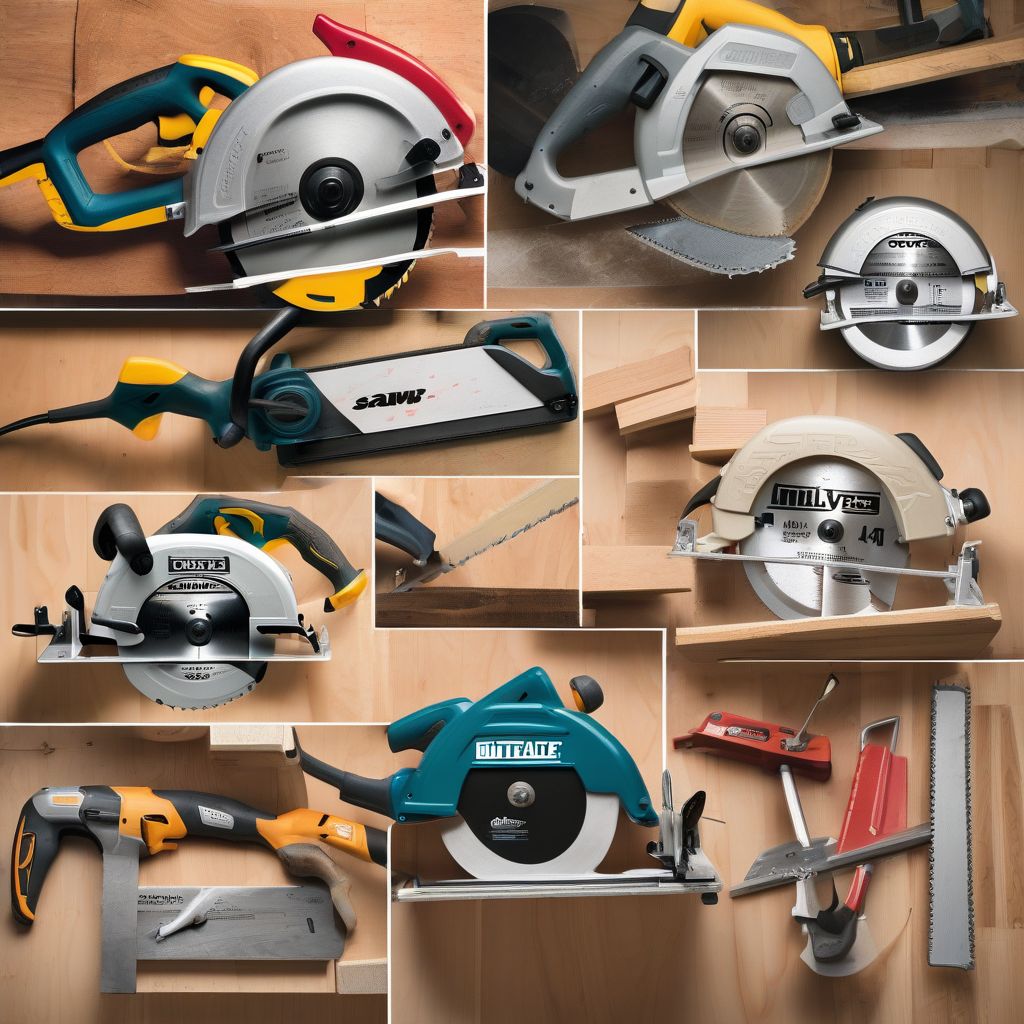Choosing the right saw can feel like navigating a labyrinth of blades and motors. Whether you’re a seasoned woodworker or tackling a home renovation, the sheer variety of saws available can be overwhelming. From the piercing shriek of a circular saw to the gentle hum of a jigsaw, each saw has its own strengths and weaknesses. But fear not! This guide will equip you with the knowledge you need to confidently compare different saws and choose the perfect tool for your project.
Understanding Your Needs: The First Step in Saw Selection
Before diving into the specifics of each saw type, take a moment to consider your project requirements. What materials are you working with? What level of precision do you need? What’s your budget? Answering these questions will narrow down your choices considerably. As renowned woodworker Nick Offerman wisely said, “Measure twice, cut once. But first, make sure you have the right saw!”
Key Saw Types: A Comparative Overview
Circular Saws: Power and Versatility
Circular saws are workhorses known for their power and ability to make straight cuts in various materials, including wood, plywood, and even concrete (with the right blade). They’re excellent for ripping lumber and making crosscuts. However, they can be challenging to control for intricate cuts, and achieving a perfectly smooth finish often requires additional sanding.
Jigsaws: Maneuverability and Curves
If your projects involve curves and intricate cuts, a jigsaw is your best friend. Its reciprocating blade allows for tight turns and intricate patterns. Jigsaws are ideal for cutting shapes in wood, plastic, and metal. However, they’re not as powerful as circular saws and can be prone to vibration, which can affect cut quality.
Reciprocating Saws: Demolition and Rough Cuts
Reciprocating saws, often called Sawzalls (a popular brand name), are the demolition experts of the saw world. Their aggressive back-and-forth motion makes them perfect for cutting through thick materials like wood, metal, and even nails. While they’re not designed for precision, they’re invaluable for rough cuts and demolition work.
Table Saws: Precision and Repeatability
For the serious woodworker, a table saw is an indispensable tool. Its fixed blade and adjustable fence allow for incredibly precise and repeatable cuts. Table saws excel at ripping lumber, crosscutting, and creating dadoes and rabbets. However, they require a dedicated workspace and can be intimidating for beginners due to their power and size.
Miter Saws: Angled Cuts Made Easy
Miter saws are designed for making accurate angled cuts, making them essential for trim work, framing, and other projects requiring precise angles. They come in various configurations, including standard miter saws, sliding miter saws, and compound miter saws, each offering different capabilities.
Comparing Saws Based on Specific Criteria
Power and Cutting Capacity
When comparing saws, consider the motor power (measured in amps or horsepower) and the cutting depth. A more powerful saw will cut through thicker materials with ease. Think about the types of projects you’ll be tackling and choose a saw with sufficient power and cutting capacity.
Blade Type and Size
The blade is the heart of any saw. Different blade types are designed for different materials and cutting applications. For example, a carbide-tipped blade is ideal for cutting hardwoods, while a high-speed steel blade is better suited for softwoods. The blade size also affects the saw’s cutting depth and performance.
Features and Ergonomics
Consider features like blade guards, dust collection systems, and laser guides. These features can enhance safety and improve the overall user experience. Ergonomics, such as handle design and weight, also play a crucial role, especially for extended use.
Budget
Saws range in price from affordable DIY models to high-end professional tools. Set a budget before you start shopping and stick to it. Remember, investing in a quality saw can save you money in the long run by reducing the need for repairs or replacements.
 Comparing Different Saws
Comparing Different Saws
Choosing the Right Saw: A Practical Example
Let’s say you’re planning to build a wooden bookshelf. You’ll need to rip lumber to the correct width, crosscut pieces to length, and potentially make some angled cuts for decorative elements. In this scenario, a combination of a circular saw for ripping and crosscutting and a miter saw for angled cuts would be a good choice. A table saw would be even better if you have the space and budget.
Maintaining Your Saw: Tips for Longevity
Once you’ve chosen your saw, proper maintenance is essential for ensuring its longevity. Keep the blade sharp and clean, lubricate moving parts, and store the saw in a dry place. Regular maintenance will not only extend the life of your saw but also improve its performance and safety.
Conclusion
Choosing the right saw can significantly impact the success of your woodworking or renovation projects. By understanding your needs, comparing different saw types based on specific criteria, and prioritizing safety and maintenance, you can confidently select the perfect tool for the job. Remember, the right saw is an investment in your craftsmanship and the quality of your work. Now, go forth and create! Share your saw selection experiences and project ideas in the comments below. We’d love to hear from you! Don’t forget to explore our other articles on woodworking and renovation tools and techniques.



